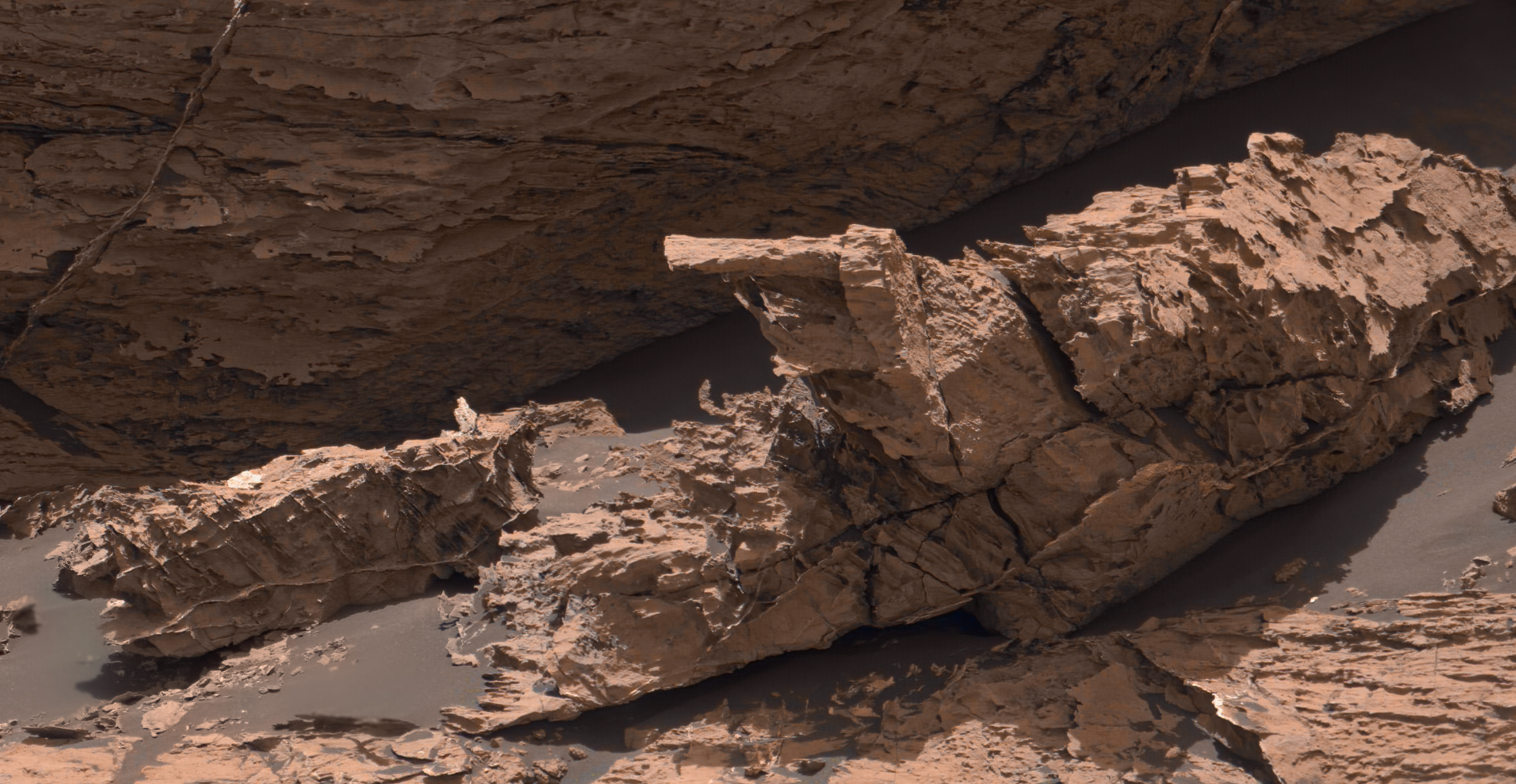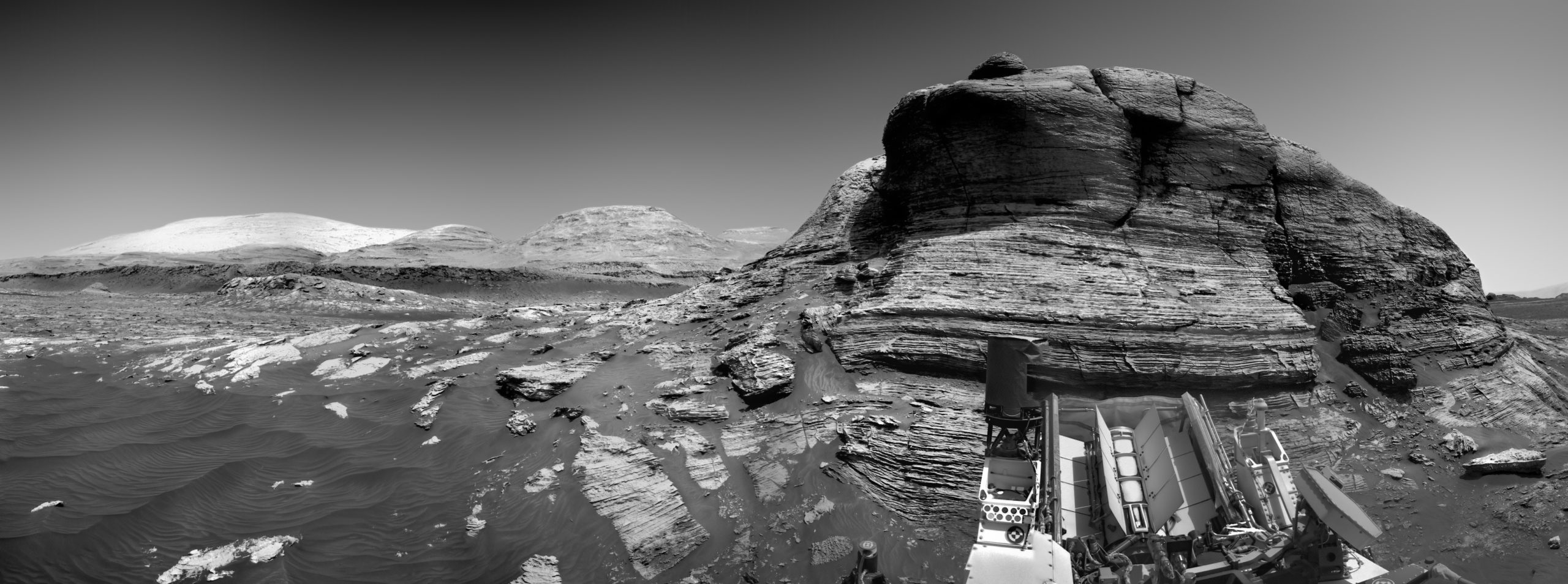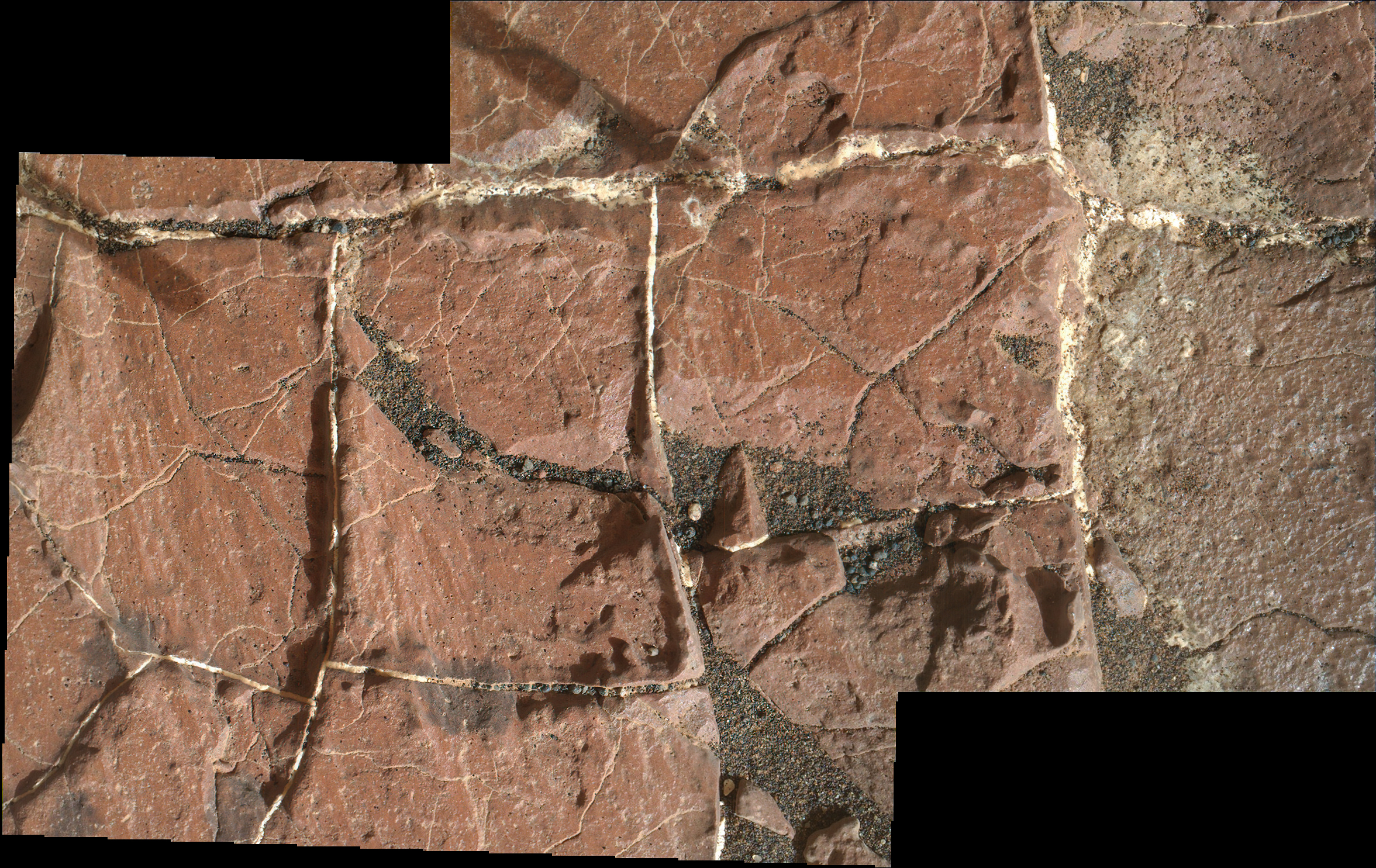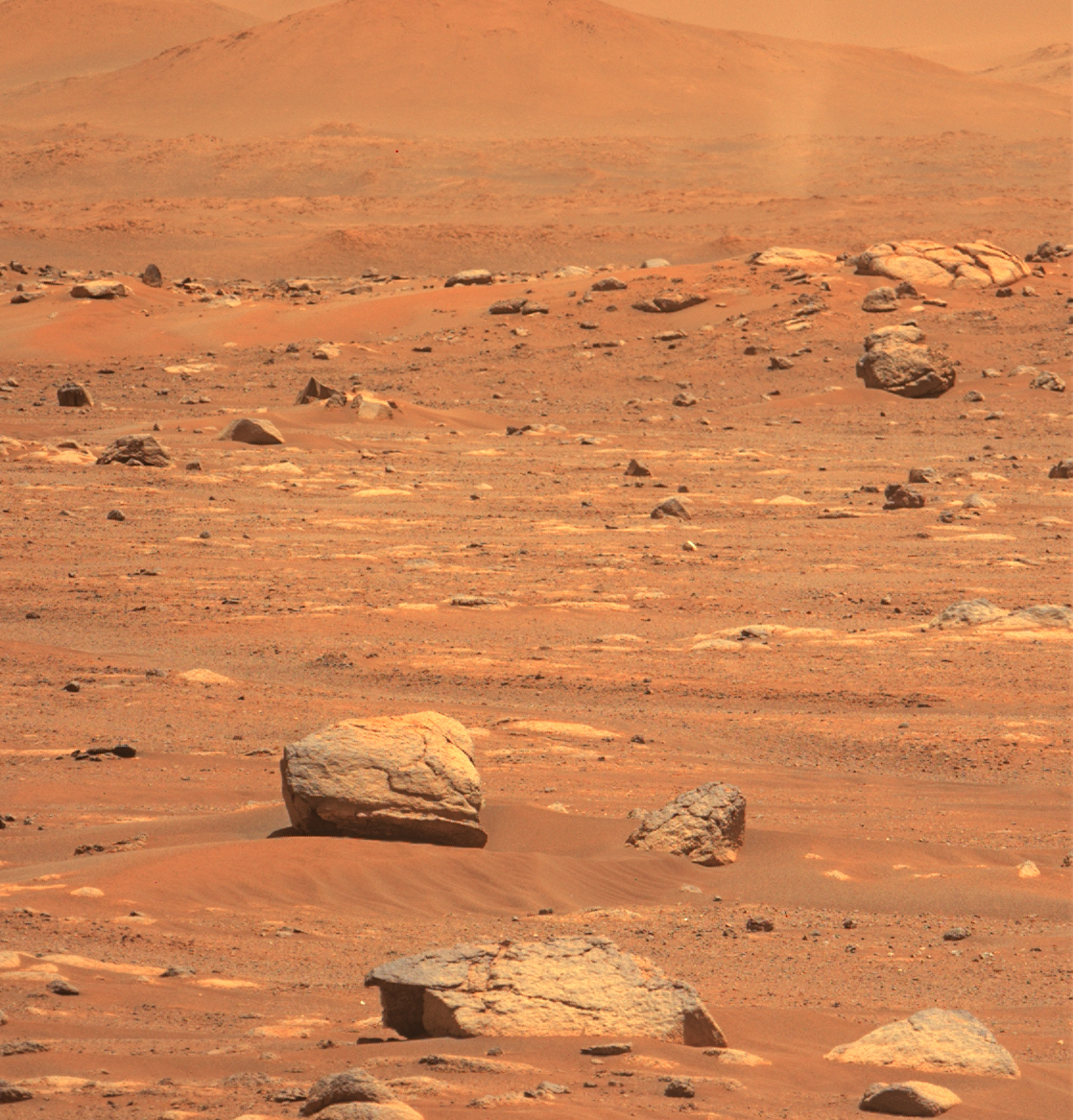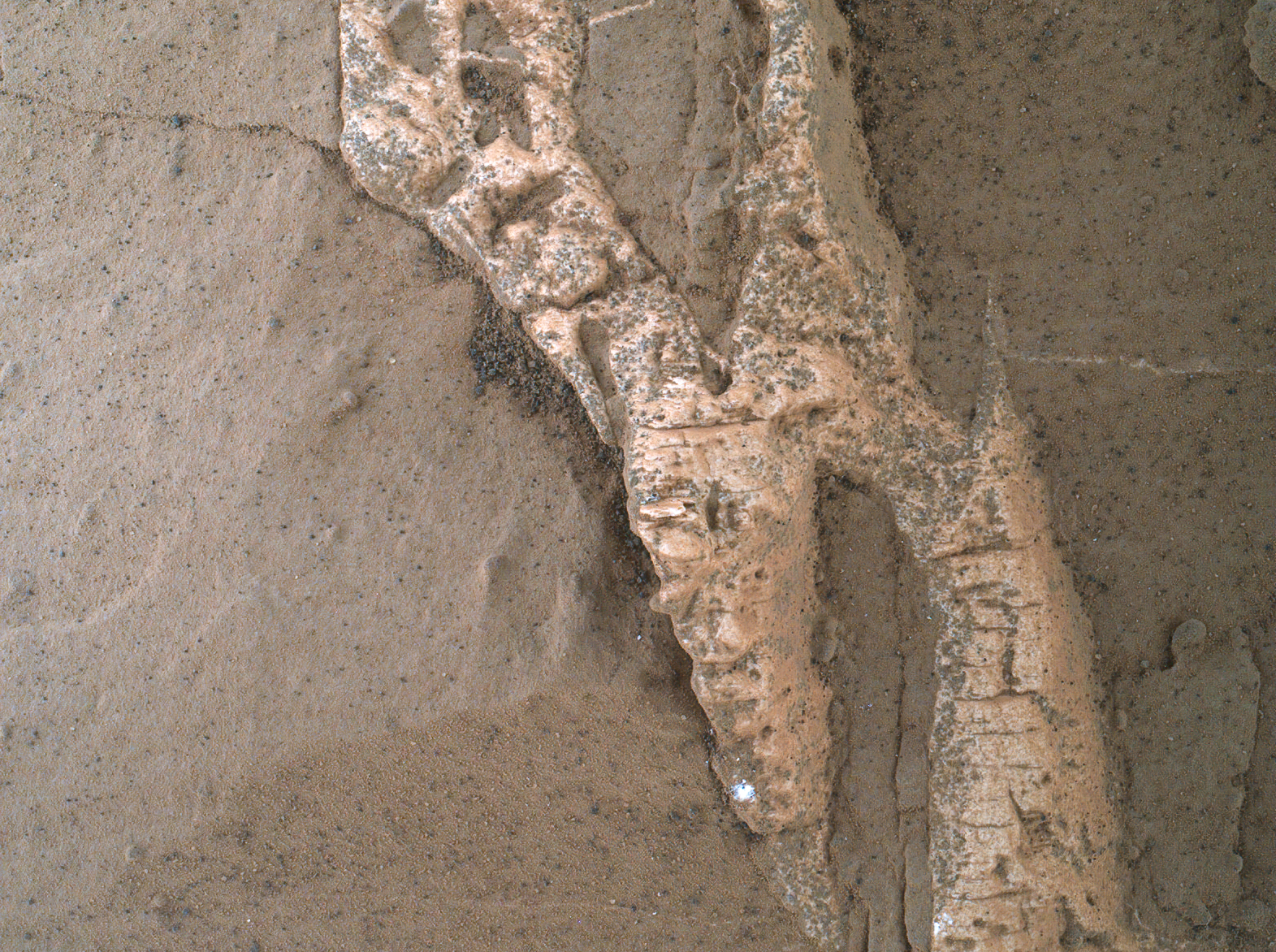Pluto
Tell Me Again About Your Tiny Little Regional God
[Source]
Pictures from Mars
Awesome
Nerd Porn
A New Perspective
Almost everyone is familiar with this view we get of the Orion constellation:
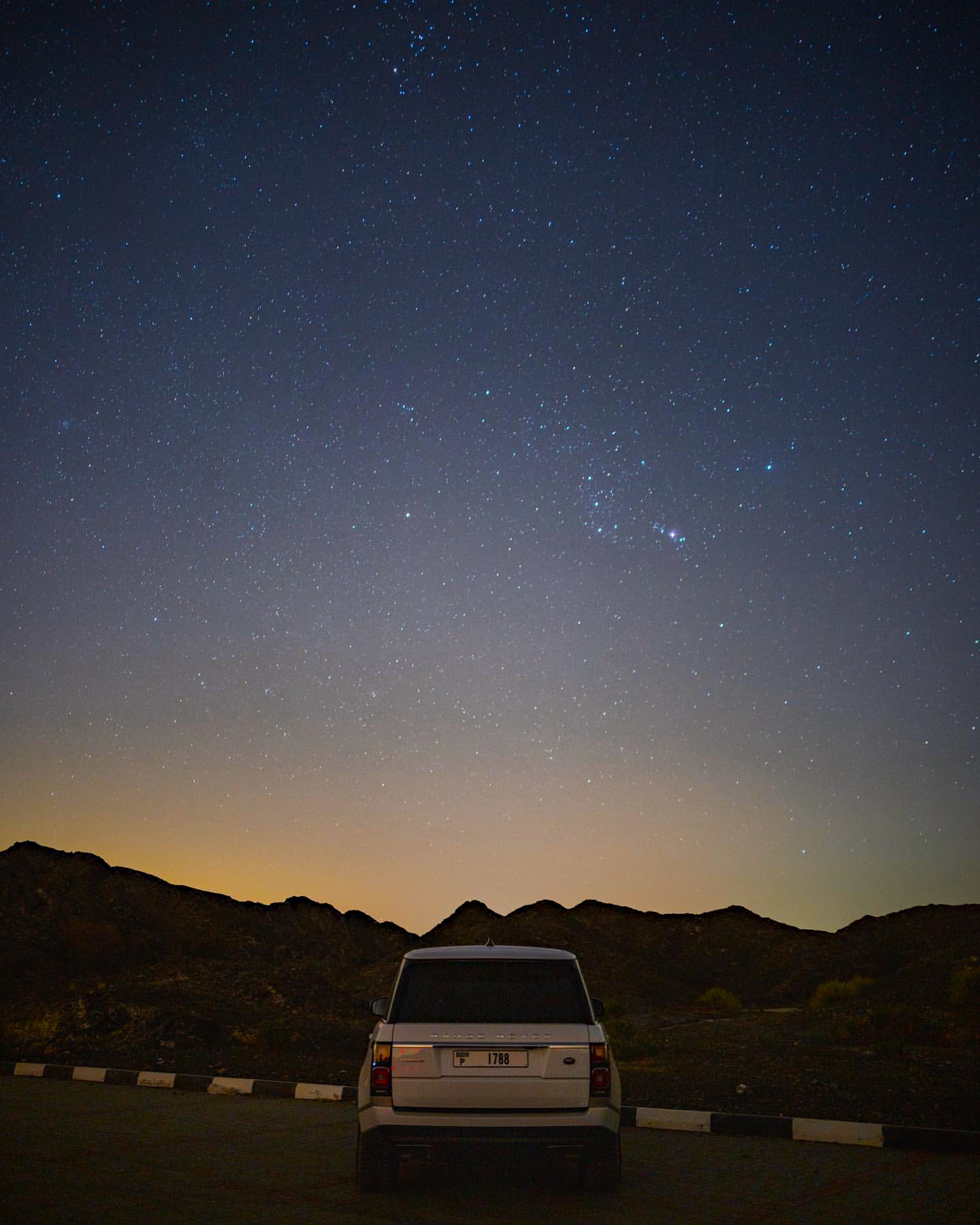
But what most people don't realize is the varying distances everything in that constellation is from Earth. Even I'd believed that the three belt stars were somewhat near each other…

From the Parker Solar Probe
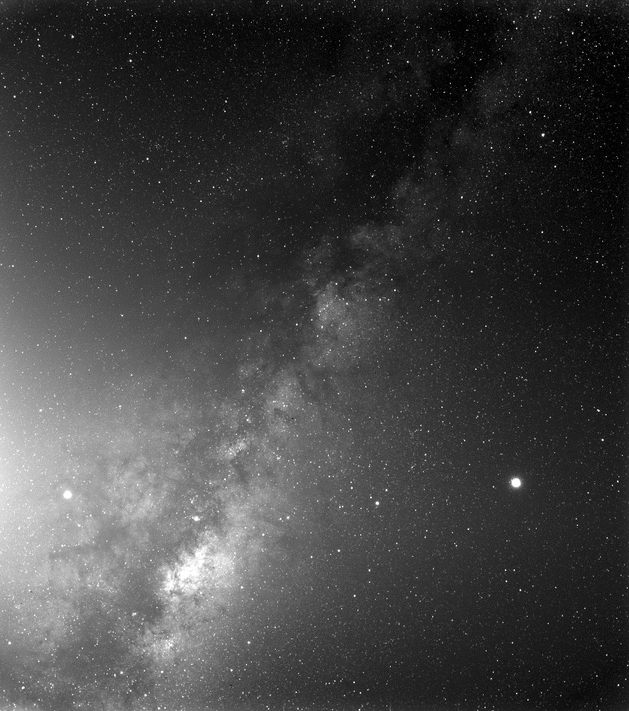
That bright spot in the lower right is Earth.
33 Minutes of Peace
I'm reasonably certain I will not live to see humans set foot upon the planet Mars, but that doesn't mean I can't dream—and this video provides food for that dream.
If you need to escape the madness swirling around us, set aside a half hour in a quiet place and watch this full screen.
And at This Point…
…if we were told (not that they actually would, of course) that all those fragments were on a direct collision course with Earth, I wouldn't be the least bit surprised.

Approaching Saturn
What would it look like to approach Saturn in a spacecraft? One doesn't have to just imagine—the Cassini spacecraft did just this in 2004, recording thousands of images along the way, and hundreds of thousands more since entering orbit. Some of Cassini's early images have been digitally tweaked, cropped, and compiled into the featured inspiring video which is part of a larger developing IMAX movie project named In Saturn's Rings. In the concluding sequence, Saturn looms increasingly large on approach as cloudy Titan swoops below. With Saturn whirling around in the background, Cassini is next depicted flying over Mimas, with large Herschel Crater clearly visible. Saturn's majestic rings then take over the show as Cassini crosses Saturn's thin ring plane. Dark shadows of the ring appear on Saturn itself. Finally, the enigmatic ice-geyser moon Enceladus appears in the distance and then is approached just as the video clip ends. After more than a decade of exploration and discovery, the Cassini spacecraft ran low on fuel in 2017 was directed to enter Saturn's atmosphere, where it surely melted.
And I will never see another craft visit Saturn in my lifetime. This was truly a once-in-a-lifetime occurrence.
I Miss Cassini



Thankfully people are still pouring over all the data and refining and reissuing photos…
Proving Once Again That We Don't Even Know What We Don't Know
From NASA:
Other Juno science results released today include that the massive cyclones that surround Jupiter's north and south poles are enduring atmospheric features and unlike anything else encountered in our solar system. The findings are part of a four-article collection on Juno science results being published in the March 8 edition of the journal Nature.
"These astonishing science results are yet another example of Jupiter's curve balls, and a testimony to the value of exploring the unknown from a new perspective with next-generation instruments. Juno's unique orbit and evolutionary high-precision radio science and infrared technologies enabled these paradigm-shifting discoveries," said Scott Bolton, principal investigator of Juno from the Southwest Research Institute, San Antonio. "Juno is only about one third the way through its primary mission, and already we are seeing the beginnings of a new Jupiter."


North Vortex

South Vortex
Cassini Approaches Saturn
Someday human eyes will see this directly. Not in our lifetimes, but someday. Until that time we'll have to make due with seeing through the cameras of our robotic emissaries.
Goodbye Cassini
In less than two weeks, the Cassini probe will transmit its last data back to Earth as it plunges into Saturn's atmosphere, bringing to an end its astounding fourteen year mission to the ringed planet and its moons.
It will be missed. There are no plans (or public till to provide funding) for any new probes to revisit the outer solar system, and this saddens me no end. So much potential for our species, and yet we can't get beyond our bickering over skin color and beliefs in imaginary sky gods.
(Be patient, it takes a while for the video to load.)
"Houston, Tranquility Base Here…
…the Eagle has landed."

It's been 48 years since those immortal words were uttered, and sadly, I doubt that humanity will put another man (or woman!) on the moon until after I'm long gone from this plane of existence…if even then. And I doubt even more that the United States will be the one to do it. As a nation, it seems we've lost our way; lost our will to explore and to truly lead. Nevermind the active dumbing down of the population over the last generation—something that was brought into laser-sharp focus this afternoon as I fell down the rabbit hole of YouTube videos.
I started out innocently enough with upcoming movie trailers (there's some good stuff coming out over the next year) and then I got sucked into "You won't believe what this woman found in her attic" clickbait, and then somehow fell into Area 51 UFO conspiracies. I finally had to step away when I stumbled upon the religious yahoos claiming that the August total eclipse is proof positive of the End Times (it's in Revelation!) and/or not an eclipse at all, but rather the planet Nibiru finally careening in from the outer solar system, completely destroying all life on Earth…and the government has been hiding the truth from us for years! (Hey, even though we can't see this supposedly huge object in the night sky that's less than a month from destroying civilization, the ancient Sumarians believed in it, so it must be true!)

Indeed

"Every so often, an astronomical artist gets lucky." ~Don Dixon
The Nerd In Me
…orgasmed a little upon seeing these photos from Cassini. Saturn's rings, up close and personal:



It pains me that after this year, there will be no new pictures of Saturn. There are no plans to return to the planet during the remainder of my foreseeable lifetime. I'm glad I was alive when I was to witness this in real time.
I know it would risk losing control of the spacecraft completely, but after seeing these photos shot from still thousands of miles away, can you imagine what we'd see if Cassini flew through the rings on its final orbit around the planet?
On This Day in History



Gemini 4 astronaut Ed White becomes the first American to walk in space on June 3, 1965. White enjoyed his time floating in the void. When he was required to end his session and climb back into the spaceship, he said "I'm coming back in… and it's the saddest moment of my life." (NASA)
Amazing
NASA's JUNO probe is in orbit around Jupiter and is sending back some absolutely amazing views of the gas giant. We're seeing the planet in ways we've never seen before and in unprecedented detail.




We Don't Even Know What We Don't Know

This view from NASA's Cassini spacecraft is the sharpest ever taken of belts of the features called propellers in the middle part of Saturn's A ring.
The propellers are the small, bright features that look like double dashes, visible on both sides of the wave pattern that crosses the image diagonally from top to bottom.
The original discovery of propellers in this region in Saturn's rings (see Four Propellers, Propeller Motion, Locating the Propellers) was made using several images taken from very close to the rings during Cassini's 2004 arrival at Saturn. Those discovery images were of low resolution and were difficult to interpret, and there were few clues as to how the small propellers seen in those images were related to the larger propellers Cassini observed later in the mission (for example 'Earhart' Propeller in Saturn's A Ring, Cassini Targets a Propeller in Saturn's A Ring, and Bleriot Propeller Close-up).
This image, for the first time, shows swarms of propellers of a wide range of sizes, putting the ones Cassini observed in its Saturn arrival images in context. Scientists will use this information to derive a "particle size distribution" for propeller moons, which is an important clue to their origins.
Goodbye to Titan
Maybe the next time we visit—assuming our species survives Donald Trump—we'll send a rover…or a flotilla of boats.

From NASA:
NASA's Cassini spacecraft has had its last close brush with Saturn's hazy moon Titan and is now beginning its final set of 22 orbits around the ringed planet.
The spacecraft made its 127th and final close approach to Titan on April 21 at 11:08 p.m. PDT (2:08 a.m. EDT on April 22), passing at an altitude of about 608 miles (979 kilometers) above the moon's surface.
Cassini transmitted its images and other data to Earth following the encounter. Scientists with Cassini's radar investigation will be looking this week at their final set of new radar images of the hydrocarbon seas and lakes that spread across Titan's north polar region. The planned imaging coverage includes a region previously seen by Cassini's imaging cameras, but not by radar. The radar team also plans to use the new data to probe the depths and compositions of some of Titan's small lakes for the first (and last) time, and look for further evidence of the evolving feature researchers have dubbed the "magic island."
"Cassini's up-close exploration of Titan is now behind us, but the rich volume of data the spacecraft has collected will fuel scientific study for decades to come," said Linda Spilker, the mission's project scientist at NASA's Jet Propulsion Laboratory in Pasadena, California.
We're going to miss you, Cassini.
I Didn't Want This To End
It's taken mankind what, 6,000 years or so to fully explore the land mass of planet earth? And then I look at this and realize that even if we had the capability to send humans to Mars, a dozen lifetimes wouldn't be enough to explore it all. We aren't even to baby steps yet; as a species we're still learning how to roll over and crawl in this amazing universe we find ourselves in.
I'm Going To Miss…
…seeing pictures like this.

After Cassini plunges into Saturn in September this year, ending a decades-long mission that successful beyond measure, NASA—nor other space agency that I know of—has any concrete plans to return to Saturn. Or Uranus. Or Neptune. Or Pluto. I'm just thankful to have been alive when these wonders were initially revealed.
48 Years Ago

December 24, 1968 – The astronauts of Apollo 8 were the first humans to behold the Earth rising over the Moon's horizon. (NASA)
More Coolness
I'm Going To Miss Seeing Pictures Like This
And considering there are no plans to send any more probes to Saturn during my lifetime I'm incredibly lucky to have lived during this mission.
Cassini Completes Final Close Enceladus Flyby
NASA's Cassini spacecraft has begun transmitting data and images from the mission's final close flyby of Saturn's active moon Enceladus. Cassini passed Enceladus at a distance of 3,106 miles (4,999 kilometers) on Saturday, Dec. 19, at 9:49 a.m. PST (12:49 p.m. EST).
After revealing Enceladus' surprising geologic activity in 2005, Cassini made a series of discoveries about the material gushing from warm fractures near its south pole. Scientists announced strong evidence for a regional subsurface sea in 2014, revising their understanding in 2015 to confirm that the moon hosts a global ocean beneath its icy crust.











On Frozen Pond
"Not only is the Universe stranger than we imagine, it is stranger than we can imagine." ~ Sir Arthur Eddington, English Astronomer (1882-1944)

NASA's New Horizons spacecraft spied several features on Pluto that offer evidence of a time millions or billions of years ago when—thanks to much higher pressure in Pluto's atmosphere and warmer conditions on the surface—liquids might have flowed across and pooled on the surface of the distant world.
This feature appears to be a frozen, former lake of liquid nitrogen, located in a mountain range just north of Pluto's informally named Sputnik Planum. Captured by the New Horizons' Long Range Reconnaissance Imager (LORRI) as the spacecraft flew past Pluto on July 14, 2015, the image shows details as small as about 430 feet. At its widest point the possible lake appears to be about 20 miles across.
A lake of liquid nitrogen…now frozen. Mind blown.
Pluto
The images of Pluto that are still steadily trickling in from NASA's New Horizons probe are among the most amazing extraterrestrial images I have seen during the entire course of my life. I mean, just look at that! How can you not be in awe?
Yes, images from Mars still fire my imagination at the possibility of finding current or past life on the surface, but let's face it: except for the color and the obvious lack of vegetation, it looks for the most part like the American southwest. The pictures that were beamed back from Jupiter and it's moons were beautiful, and in the case of Europa and Io in particular, raised more questions than they answered. The images that have come back from Cassini during the twelve years (gawd, I feel old) it's been in orbit around Saturn and its moons are spectacular, even artistic—but so numerous I can't even begin to scratch the surface to see them all. The photos of Uranus and Neptune that came back from Voyager 2 in the 1980s hinted that something catastrophic happened in the outer solar system in the distant past that knocked one of them on its side, but again they only raised more questions than they answered.
But none of these pictures have fired my imagination the way the images from Pluto have. Maybe it's because until last summer, Pluto at best was nothing more than a tiny, blurry blob in the best telescopes. Or maybe it's because it turned out to be something completely different from what anyone was expecting. Maybe its because the pictures added more evidence to the idea that something big happened in the outer reaches of our solar system in the distant past. (The fact that Pluto is geologically active—flying in the face of everything we thought we knew about the outer solar system—and with its moon Charon bears the unmistakable scars of having collided with something tells me it's not as boring and unchanging at 40AU from the sun as we'd believed.) All I know is that these alien landscapes are filling me a with a sense of absolute wonder that precious few others have done, and it saddens me no end to think that no more probes will be visiting that tiny, fascinating world in my lifetime, much less that I will ever live to see human explorers walk its surface.
That being said, when I was a kid spending summers wearing down my box of 64 Crayola crayons to nubs by drawing the planets again and again hoping to get them just right, I would never in my wildest dreams have imagined that humanity would actually be visiting any of them—much less all of them during my lifetime—and for that I feel extremely lucky.
Squee!
As a child who grew up in the 1960s and being enthralled with the Apollo moon landings even then, I think I just orgasmed.
NASA has made their entire raw, unprocessed Hasselblad Apollo image archive available to Flickr. Conspiracy theorists and alien artifact hunters are undoubtedly going to have a field day. As for me, I just think they're beautiful.
A small sampling of the hundreds of photos posted (warning: some of them are quite large so be patient while they load):




















